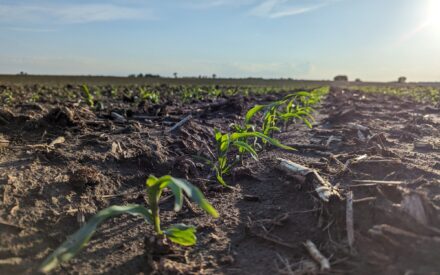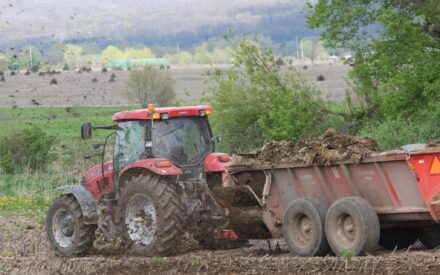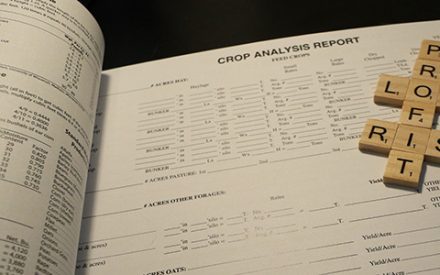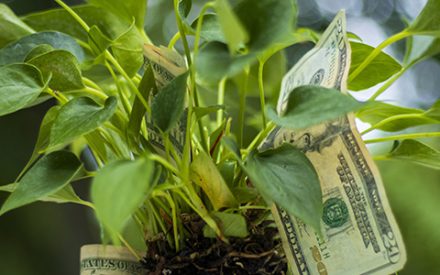Video Summary
This video presents an overview of Dr. Rebecca A. Larson’s research project focused on real-time nutrient sensing in manure using a near-infrared (NIR) sensor system. Dr. Larson, professor and extension biowaste specialist at UW–Madison, explains the importance of precise nutrient management in manure application to reduce environmental losses and improve crop yields. The NIR sensor system measures nutrient levels in manure as it is applied, providing real-time data to optimize application rates. The video highlights the variability of manure nutrients and the benefits of using NIR technology to achieve more accurate and efficient manure management.
Resources
Transcript
0:05
Alright.
0:06
Thanks all for being here this afternoon.
0:08
I know we’re about at the scheduled end, so I’ll move quickly through this presentation just to give you some of the highlights.
0:15
I just want to highlight that I’ve also been working with Doctor Joe Sanford and someone on my team, Tyler Liskow, who is out in the field right now prepping our next year for this particular research project as we got a little bit of nice, unexpected nice weather.
0:31
So I’ve been, I’m professor here.
0:33
I’ve been here about 15 years.
0:34
I’m pretty much all manure all the time.
0:36
I’m a bio waste engineer by training.
0:39
I really like to think of manure systems as like the old school of sustainability.
0:44
You know, we’ve used manure for a long time to, to apply onto land to provide the nutrients for feed.
0:51
And really the goal is we’re trying to refine this and refine this to reduce losses from this system.
0:58
And the really clear goal is like so many studies come out saying, and then the end result is that really if you can be more precise with the nutrients you need, and that’s what we’re trying to achieve with nutrient management plans, the more precise you can be with applying the amount of manure that your crops need, the less that is just remaining in the soil and the less that is likely to be lost.
1:19
No matter what kind of conservation practices you use, this overall nutrient balance is probably the most important thing and trying to reduce losses in various forms, whether that be from runoff or leaching or emissions.
1:33
I do like to show this because I loved this old school manure hauling system.
1:37
Just to remind you that we’ve come a long way and we haven’t come a long way, right?
1:41
So for a long time we’ve been applying manure using various types of systems.
1:47
You’ll see, you know, the shift here to maybe broadcast systems to now injection systems to being able to measure flow rates and a whole wide variety of tools that we now have.
1:59
One of the most recent ones that I’ve been working on lately is this manure sensing system.
2:06
So the reason that we started investigating this and we thought it was pretty interesting is that I think a lot of people are aware that the nutrient ratios in manure are not always what the crop needs, right?
2:18
So commonly you have too much phosphorus compared to the amount of nitrogen.
2:23
So you’re kind of at this imbalance and it makes it a little hard to do accounting and applying manure.
2:28
So if you apply to manure to the nitrogen needs, you eventually would probably have too much phosphorus.
2:34
And so then if you’re applying to that to only hit that phosphorus need, then you may need more nitrogen.
2:40
And so the more precise and information you have, the better your secondary nitrogen application can be in terms of getting out there with the crop needs and also the the less over application you get, which will save you money and not having to apply additional supplemental nitrogen.
3:00
The one of the really key challenges in this, and we’ve been studying this for a long time is that manure is really variable.
3:06
It’s really crazy from farm to farm.
3:08
Like even if you look at that manure DB database that they have, you’ll see the variation in manure is enormous.
3:14
And a lot of people think that it’s just from farm to farm, but it’s actually just like within one farm.
3:19
When you’re emptying a storage in particular, you’ll see this huge variation in manure because you get settling of some nutrients and, and you get some, you know, differences in diet, difference in animal, all the differences in bedding and then the how this distributes in your storage.
3:35
And so it can really change the concentration.
3:38
We did a lot of studies where we were, I think Kevin Erb helped us out with this one and some other people where we were like emptying storage basins across a number of farms and then taking a bunch of samples across all those storage basins.
3:50
And you’ll see, depending upon the farm, the range was huge.
3:53
This one’s for total solids.
3:55
You can look at nitrogen variability that’s also highly variable and not necessarily related to the total solids.
4:01
So all of these things are kind of varying on their own.
4:05
I think phosphorus is the one that really starts varying highly.
4:09
So what do we do about that?
4:10
Well, the first thing we recommend is if you’re going to take samples, we ran all these statistics and we start to realize the more samples you can take, right, the closer you’ll get to what we think is the like the, the actual number that you think you’re applying.
4:26
So we’ll say like for nitrogen, we think you need to do about 9 samples every time you empty your pit.
4:32
So any like 2 week period
4:34
We recommend taking nine samples.
4:35
Do you want to analyze and pay for 9 samples?
4:37
Maybe not.
4:38
Then we really just recommend you composite you take 9 samples throughout your emptying, put those into one thing and send that in and you’ll get the best results you can using that kind of method.
4:49
But now we have the system that’s a near infrared system that actually predicts nutrients real time.
4:56
The way it does that is it has a system where it passes near infrared through the manure as it moves through the system and it like you can either bounce back or collect the spectrum on the other side of the manure.
5:09
There’s a few different ways to do that.
5:11
And then it can tell you that spectrum can be related to certain bonds and then you can predict the amount of nitrogen, phosphorus, etcetera in the manure.
5:22
Now the predictions are really only based are only work as well as the the models that we build.
5:29
And so you have to feed it a bunch of data to be able to relate those things to what the sensor was reading.
5:36
So that’s just a little bit of background of how it works.
5:39
I’m not going to get into too much of that, but that sensor then goes on the tanker and then so it gives you a readout as you’re applying the manure in the field.
5:50
One of the things that we’re also thinking of and some others have thinked of as maybe thought of, think of thought of as maybe putting the sensor on like the filling station.
6:00
So you wouldn’t need one for every tanker or every tractor that you’re running a drag hose line through.
6:05
So there’s a lot of possible ways to use this, but the whole idea is you can be more accurate with what you’re applying out in the field.
6:13
So you know what went out there.
6:14
We analyzed the sensor on its own compared to a lot of certified manure laboratories and that was actually within a fair range.
6:23
You can see it’s this one all the way on the right hand side with the pink, the NIRS, that’s the sensor.
6:30
And then these are a whole bunch of labs that went in a were approved for certification.
6:36
I would say generally we see the nitrogen and ammonia pool being a little bit improved in accuracy in the field, but they all even for P2O5 and K2O, they weren’t hugely different.
6:50
Our studies in the lab, some additional studies we ran really supported that you were, you were doing fairly well with nitrogen, maybe not as well with phosphorus.
7:00
Now what does that really mean?
7:01
So at first when I saw the results, I was like, well, it’s not perfect.
7:05
Can we say it’s a substitute for the lab?
7:07
But as we started running field trials, I would say I’ve been thinking a little bit differently about it.
7:13
So there was some people who ran some some of that data running on the line that was emptying the storage and they were finding a lot of variation and that the NIR was doing fairly well at predicting that variation.
7:29
Now we wanted to look at more than that.
7:31
So although the sensor is important itself, it’s really the whole manure application system that I really want to compare right.
7:40
So in a, in a maybe a traditional method, you would look at last year’s manure results, you would choose an application rate for your field, you would then apply the manure and take a sample and then correct your information later based on what your results said.
7:57
And so we wanted to compare that system generally to using the sensor, which gives you a readout exactly and makes a map of the information that you’re getting.
8:07
So, you know, this was kind of the setup of our trial where we were doing different target nitrogen rates using that fixed rate idea, what the farm typically does at Arlington.
8:17
And then we were using this NIR to try to target that nitrogen application rate.
8:24
And what we found was that the NIR comparatively to this system for that year for that manure was much closer to the target application than our fixed rate.
8:37
Both systems over applied manure.
8:39
So both systems we ended up putting more manure that could be different depending upon how much you’re, you know, your manure varied from the manure before.
8:49
But in this case, that’s why we want to do a lot more years of this.
8:53
But in this first year, it really looked like the NIR was more accurate.
8:57
We’ll see if that continues to hold over numerous years and lots of different manures that we’re going to test out in the next few years.
9:04
When we looked at the field trials in general, we saw that the crop yields were fairly similar with not a lot of not, no significant differences in the plots.
9:15
But we can see that the nitrogen use efficiency was generally better in the NIR system because we were applying more of what we need.
9:23
You know, we weren’t over applying so much.
9:25
So that would improve our nitrogen use efficiency.
9:28
This particular field though, if you can see the control, the yields in the control were actually very high because there was a lot of nitrogen already within the soil.
9:36
So we’re doing some tests to maybe reduce what our target nitrogen is
9:40
So really see maybe the impacts over a variety of different systems.
9:45
The really cool thing I think about this is you get these maps, these look kind of crazy because we you can see our plots.
9:51
I’ve been, I need to get one from Tyler that’s run on like a more consistent field.
9:56
But you can really see the differences.
9:58
You can see where we were applying different rates based on those colors there you can see some red where we weren’t getting started yet in the plot.
10:05
So it can be really useful that then you can use that to do your supplemental nitrogen on each field.
10:13
So really useful in those maps.
10:14
And actually when I was talking to some grain producers, they were interested in purging manure, but they had no idea how to take the credits from the manure because they weren’t producing it.
10:24
And they were like, oh, now I might be more willing to take the manure from my neighbor if it could produce me this map that then I could better understand how my supplemental nitrogen needed to go out.
10:37
I just want to say, you know, that we appreciate the USDA for funding this.
10:40
The main take away I want to tell everybody is we’re still working on the system.
10:45
I’m thinking so far it’s looking like a potential improvement.
10:48
But I do think there’s ways without buying the sensor that you could really improve your precision of how you’re putting manure nutrients out there.
10:58
And that’s really looking at making sure you’re doing the composite samples through emptying and really doing the the tests on this on your system to make sure that you know that you’ve calibrated your spreader or whatever system you’re using.
11:14
I think there is so much variability already that if you’re not calibrating and you’re not doing some of those things on a regular basis, you’re really not going to be sure of what you put out there.
11:25
So the more knowledge you have and the more accurate and precise you can be about that, the much bigger reduction in losses that you might have for a field and the improvements overall of what you might see.
11:37
So thanks so much for listening.
11:40
I, I don’t yet have a fact sheet on this topic.
11:43
We’re still working on that.
11:45
If you go to the learning store and search my name, you’ll see a whole bunch of manure, probably like 20 or 30 fact sheets about all kinds of manure systems, biochar making biochar from manure processing manure land, applying manure, managing nitrogen manure.
11:59
So they’re all in there.
12:00
You can find them if you just search my last name and like see all results.
12:03
I’m hoping one day I will get those better organized for you all.
12:07
But if you want to see all those, there’s some whole recent set of them on manure processing and hopefully in the next year or two, we’ll get a few out there on what the full data set looks like.
Badger Crop Connect
Timely Crop Updates for Wisconsin
Second and fourth Thursdays 12:30 – 1:30 p.m.
Live via Zoom

 ▶ Can Wisconsin Liquid Dairy Manure Provide Enough Micronutrients for Row Crops?
▶ Can Wisconsin Liquid Dairy Manure Provide Enough Micronutrients for Row Crops? ▶ Manure Nitrogen Credits: What do we know, and what's next?
▶ Manure Nitrogen Credits: What do we know, and what's next? ▶ Fall 2025 Financial Assistance for Producers
▶ Fall 2025 Financial Assistance for Producers ▶ Fall 2025 Ag Policy Update
▶ Fall 2025 Ag Policy Update


